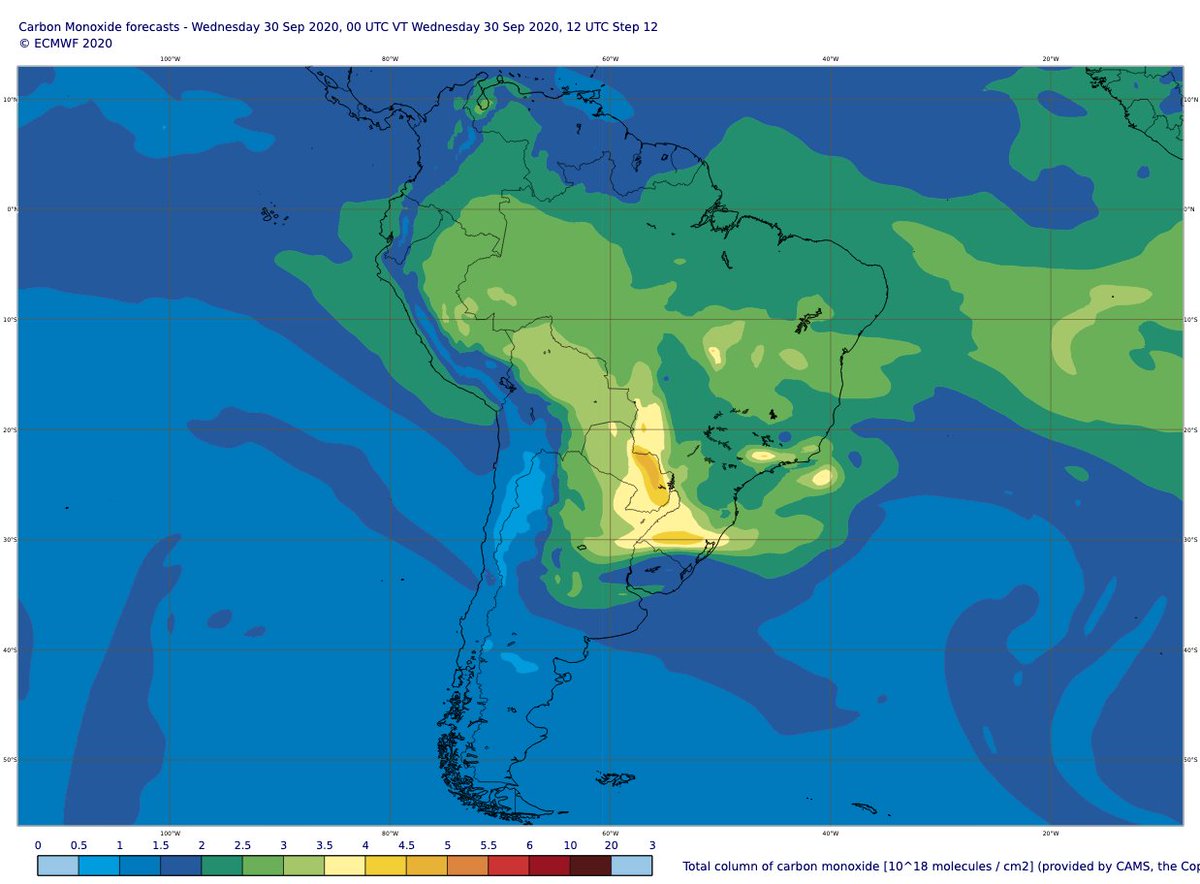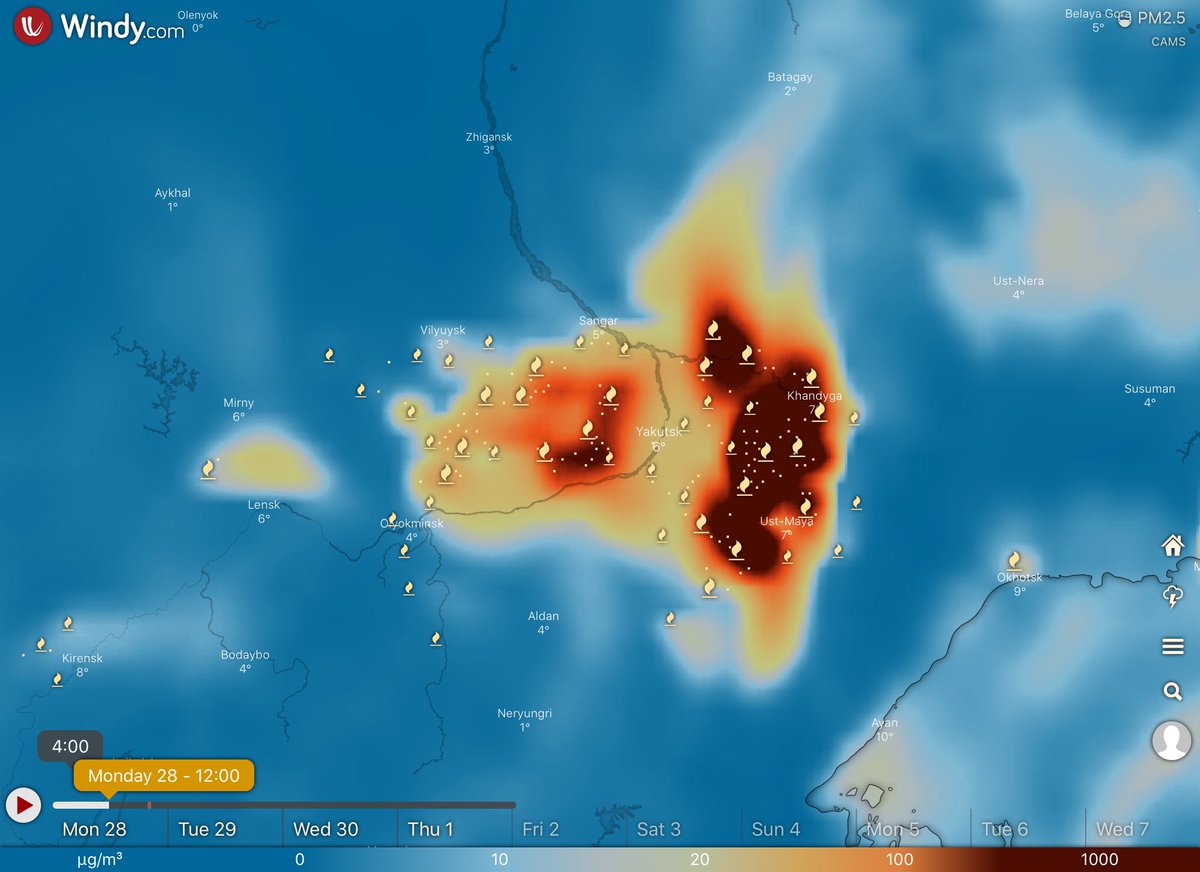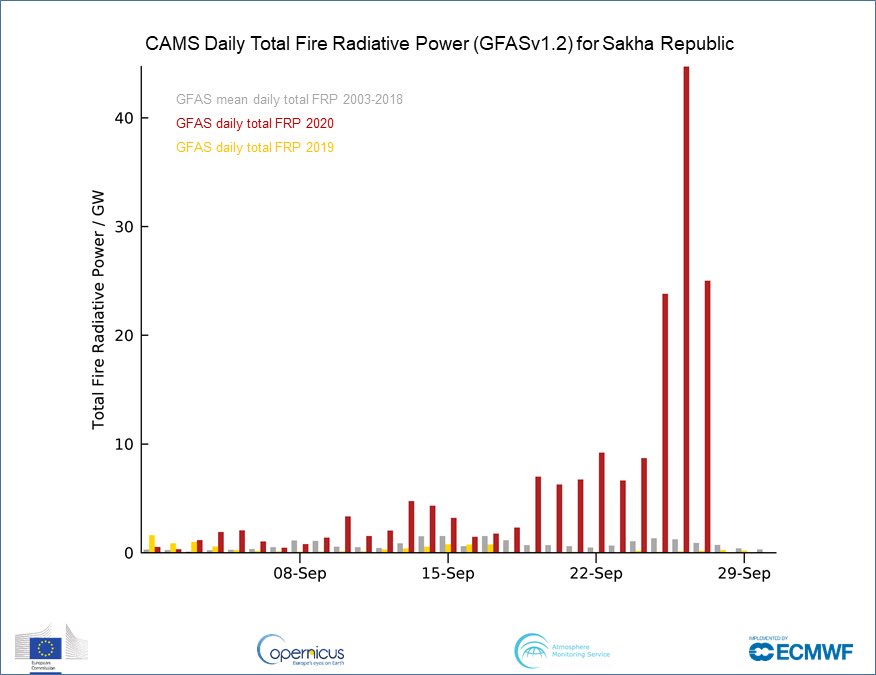#Siberia/#ArcticCircle #wildfires continue to produce huge amounts of energy & smoke emissions significantly greater than 2019 & 2003-2018 mean. July 2020 total estimated carbon emissions are already highest in the 18 years of #CopernicusAtmosphere Monitoring Service GFAS data 


https://twitter.com/m_parrington/status/1285862322985213952



and continuing on 23 July with many active fire obs and clearly visible thick smoke heading over Chukchi Sea in @JPSSProgram #VIIRS🛰️ imagery viewed from NASA Worldview go.nasa.gov/2ZRRfhB 

@JChimotScience @tonyveco @annamaria_84 @GuillermoRein @centrewildfires @sgconard @queenofpeat @cwiedinm @GuidovanderWerf @robertdfield @TheRealPyroTina @dr_firelady @RSFireNerd @OroraTech @steverarnold @ACRoBEARArctic @_Arctic_Circle @WeatherSarov1 @weatherdak @ScottDuncanWX
cc @Rafacereceda @adamvaughan_uk @Seana_Davis @catBrahic @themadstone @blkahn @BBCAmos @afreedma @BrandonCNN @BenBendeac @Bewickwren @bberwyn @3minPP @thisclimatepod @IAWF @wildfiretoday @avoiland @arctic_today @siberian_times @daisydunnesci @CarbonBrief @eyeonthearctic
• • •
Missing some Tweet in this thread? You can try to
force a refresh























